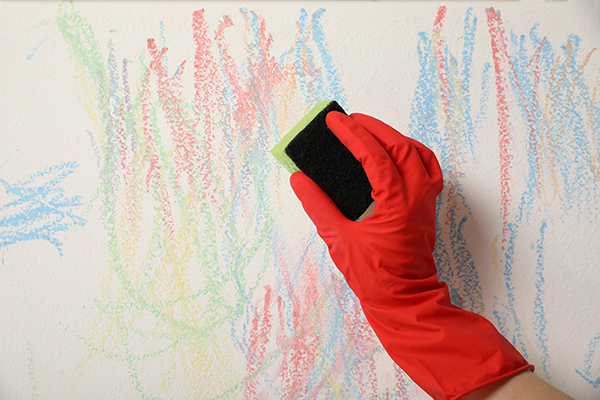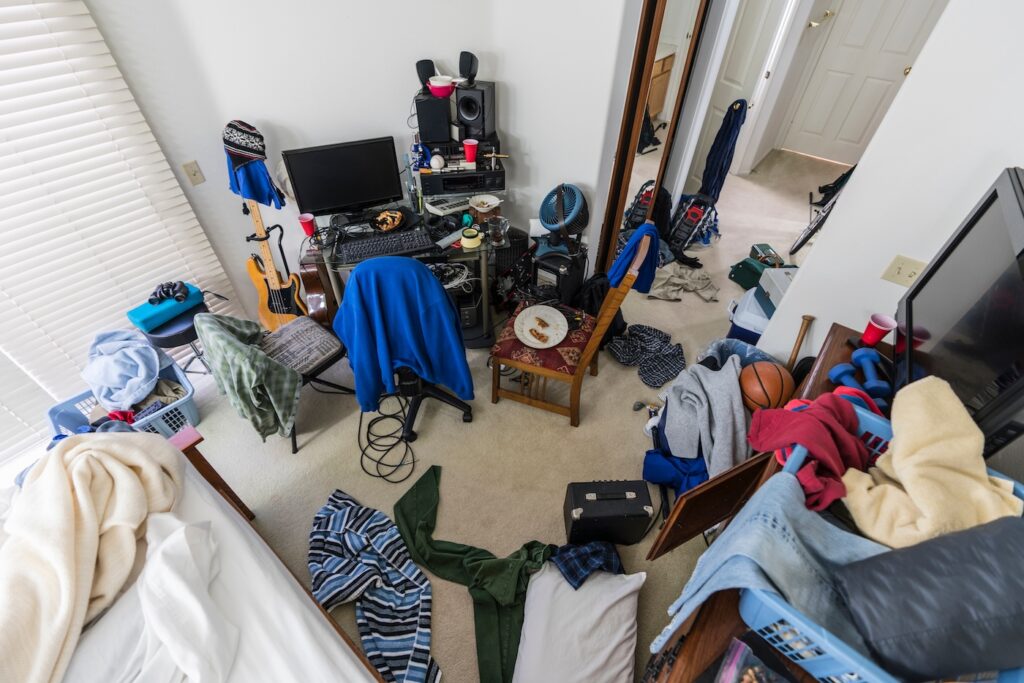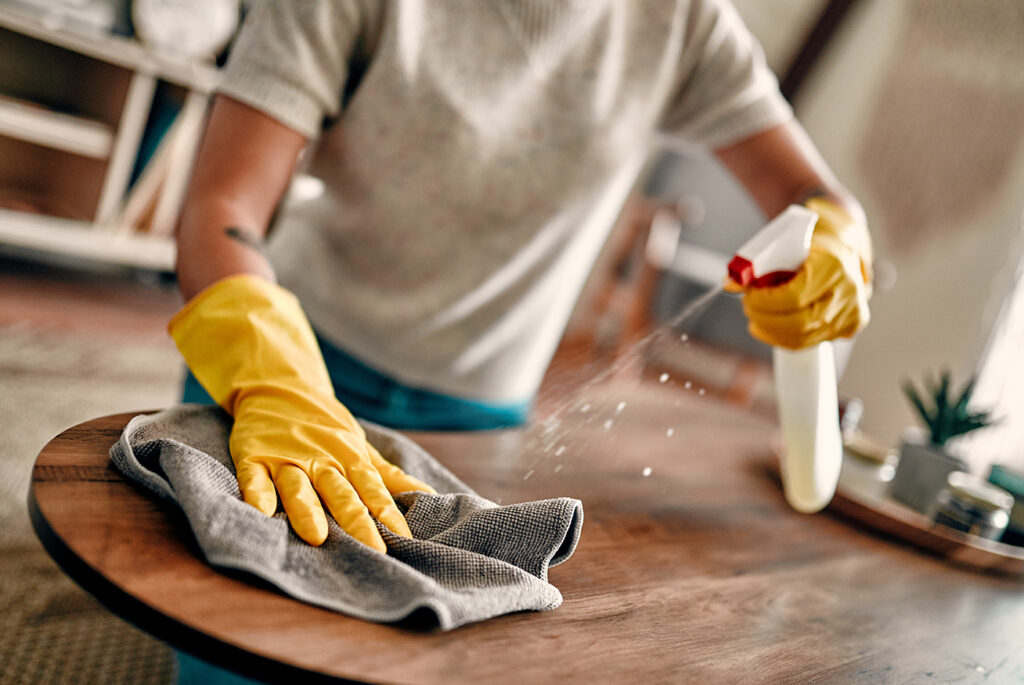How to Clean Painted Walls Without Damaging Them
Your home’s walls are not just a backdrop; they’re a canvas that sets the tone for your living space. The hues that adorn your painted walls set the stage for the aesthetics of your home. You’re probably used to mopping your floor or having your windows cleaned, but when was the last time you cleaned your painted walls?
Once you get inspired to clean your walls, it’s crucial to understand the delicate balance between cleanliness and preserving the integrity of your painted walls by avoiding harsh chemicals or improper cleaning techniques. In this blog post, ” we unravel the mysteries of how to clean walls effectively and safely. Say goodbye to the fear of damaging your walls in the pursuit of cleanliness! These Tasker-fueled tips on how to clean walls will help you keep your living space looking fresh, vibrant, and inviting.
How Often Should You Wash Your Walls
Part of knowing how to clean walls is understanding the frequency with which you should wash them. So how often should you wash your walls? How often to wash your walls depends on various factors, such as the level of traffic in your home, the presence of children or pets, and the overall environmental conditions. As a general guideline, it’s recommended to wash your walls at least once a year to remove accumulated dust, dirt, and potential stains. However, high-traffic areas or spaces prone to splashes and spills may require more frequent cleaning!
If you notice specific stains or marks on your walls, it’s best to address them promptly rather than waiting for an annual cleaning. Regular maintenance can help prevent the buildup of grime and ensure that your painted surfaces retain their original luster.
Cleaning Taskers have noticed that when it comes to how to clean walls areas near cooking spaces, where grease and cooking odors can linger, often benefit from more frequent cleaning to maintain a fresh and welcoming atmosphere. Consider wiping down these areas quarterly to avoid buildup.
What to Use to Clean Walls
Cleaning your walls effectively requires the right tools and materials to ensure a thorough and safe process. Here’s what you’ll need before showing you how to wash your walls.
Tools:
- Soft, lint-free cloths or sponges
- Microfiber cloths
- Soft-bristle brush or a clean, white eraser for spot cleaning
- Bucket for mixing wall cleaning solution
- Sturdy step ladder for reaching high areas
- Vacuum cleaner with a brush attachment (for textured walls)
Materials:
- Mild dish soap or a gentle all-purpose cleaner
- Warm water
- White vinegar (for tougher stains or grease)
- Baking soda (for scrubbing without scratching)
- Rubber gloves to protect your hands
- Drop cloths or old towels to protect the floor from drips
Before you begin, always test any wall cleaning solution in an less visible area to ensure it doesn’t damage the paint. With these tools and materials at your disposal, you’ll be equipped to clean any type of wall effectively without compromising on finish or color.
How to Clean Painted Walls
Knowing your wall’s finish helps you choose the right cleaning method and what to use to clean walls so you don’t compromise the paint. Here’s how to clean walls step-by-step.
1. Determine the Wall Finish Type
Understanding the type of paint and finish on your walls is crucial before cleaning to avoid potential damage. Common types include:
Oil-based Paint
Oil-based paint is often used for crown moldings or doors. It creates a hard coating known for its durability and ability to resist stains. The below steps will work to clean oil-based paint with no issues. You will want to include vinegar in your wall cleaning solution to make sure you’re able to remove any stains from your oil-based painted walls. For tough stains, leave your wall cleaning solution on your walls for at least 10 minutes before wiping off.
Latex Paint
Latex paint, also known as water-based paint, dries quickly. This type of paint can be washed with soap and water alone—no special wall cleaning solution needed.
Matte Finish
This type of paint is also known as a flat finish. It is sensitive to scrubbing so with this type of paint, you’ll want to be extra gentle. You also do not need to use any kind of wall cleaning solution with matte walls—it’s best to use a sponge with warm water to wipe them down, and then finish by drying with a microfiber cloth.
Semigloss Finish
Semigloss paint is super durable. Because of this, it’s frequently used in kitchens or bathrooms—the busiest areas of the home. You can use degreasing soap and warm water as the wall cleaning solution for this type of paint.
2. Remove the Dust
Before applying any wall cleaning solution, eliminate loose dust and cobwebs by using a soft-bristle brush, a clean white eraser, or a vacuum cleaner with a brush attachment. This initial step prevents dirt from turning into a muddy mess when cleaning.
3. Prepare the Wall Cleaning Solution
Refer to the wall types above to determine what type of wall cleaning solution is best for the type of paint you’re dealing with. In general, you can mix a mild solution of warm water and a gentle dish soap or an all-purpose cleaner. For stubborn stains or grease, you can add a small amount of white vinegar. Avoid using abrasive cleaners, as they can damage the paint.
4. Wash the Walls
It’s time to wash! Dip a soft cloth or sponge into the water or wall cleaning solution and gently scrub the walls in a circular motion, working from the bottom up. Be cautious around corners and edges to prevent excessive saturation. For textured walls, use a soft-bristle brush to get into crevices without causing damage.
5. Rinse and Dry
After washing, rinse the walls with a clean sponge or cloth dampened with plain water to remove any cleaning residue. Dry the walls thoroughly with a soft, lint-free cloth to prevent water streaks or damage to the paint. Ensure proper ventilation to expedite the drying process.
By following these steps tailored to your wall’s specific characteristics, you can achieve a clean and refreshed look without damaging your painted surfaces.
How to Clean Tough Stains Off Walls?
Here’s what Taskers recommend for how to wash walls featuring common types of stains and how to clean stains off walls. First, it’s essential to approach the cleaning process with care to avoid damaging the paint. Begin by testing a small area to ensure that your chosen method won’t affect the paint color or finish.
For crayon marks: A gentle application of baking soda mixed with water to form a paste can often do the trick. Apply the paste to the stain, let it sit for a few minutes, and then gently scrub with a soft cloth or sponge. The baking soda’s mild abrasive properties help lift the crayon without harming the paint.
For more stubborn stains like permanent markers: Rubbing alcohol is a powerful ally. Moisten a cloth with rubbing alcohol and dab the stain, making sure not to rub too hard to prevent paint damage. As you work, check the cloth to ensure you’re not accidentally transferring color from the wall onto the cloth. Patience and a gentle touch are key when dealing with tough stains, and the right approach can restore your walls to their pristine condition.
A Tasker Can Help to Clean Painted Walls
Considering the nuances involved in cleaning painted walls, like knowing how to clean stains off walls, seeking assistance can be a wise decision to ensure a thorough and damage-free process. Taskers, experienced individuals skilled in various home maintenance tasks, can offer invaluable expertise in tackling wall cleaning with precision. Whether you’re dealing with delicate finishes, stubborn stains, or simply want the job done efficiently, Taskers are equipped to provide the seasoned touch your walls deserve. Save time and eliminate the guesswork by entrusting your wall cleaning project to Taskers who understand the intricacies of preserving the beauty of your home. Your walls will thank you for it!
Wall Cleaning FAQs
Can you mop walls?
Yes, you can mop walls, but it’s essential to be cautious about the method and materials you use. For painted walls, avoid getting it too wet since that could damage the paint. Instead, dampen a soft cloth or sponge with a mild wall cleaning solution, and gently wipe the walls. For textured walls, use a soft-bristle brush to reach into crevices without causing harm.
Can you paint over dirty walls?
Painting over dirty walls is not recommended, as it can result in an uneven finish and poor paint adhesion. Before applying a fresh coat of paint, ensure the walls are clean and free of dust, grease, and stains. Follow proper cleaning techniques, allow the walls to dry completely, and consider using a primer to create a smooth surface for the new paint to stick to.
How to keep walls clean?
To keep walls clean, add regular wall maintenance to your cleaning routine. Dust the walls regularly using a soft cloth or a vacuum cleaner with a brush attachment. Address stains promptly using gentle wall cleaning solutions appropriate for your wall’s finish. Additionally, consider using washable paint for busy areas and preventive measures like placing mats or protective coverings in areas prone to splashes or spills.














